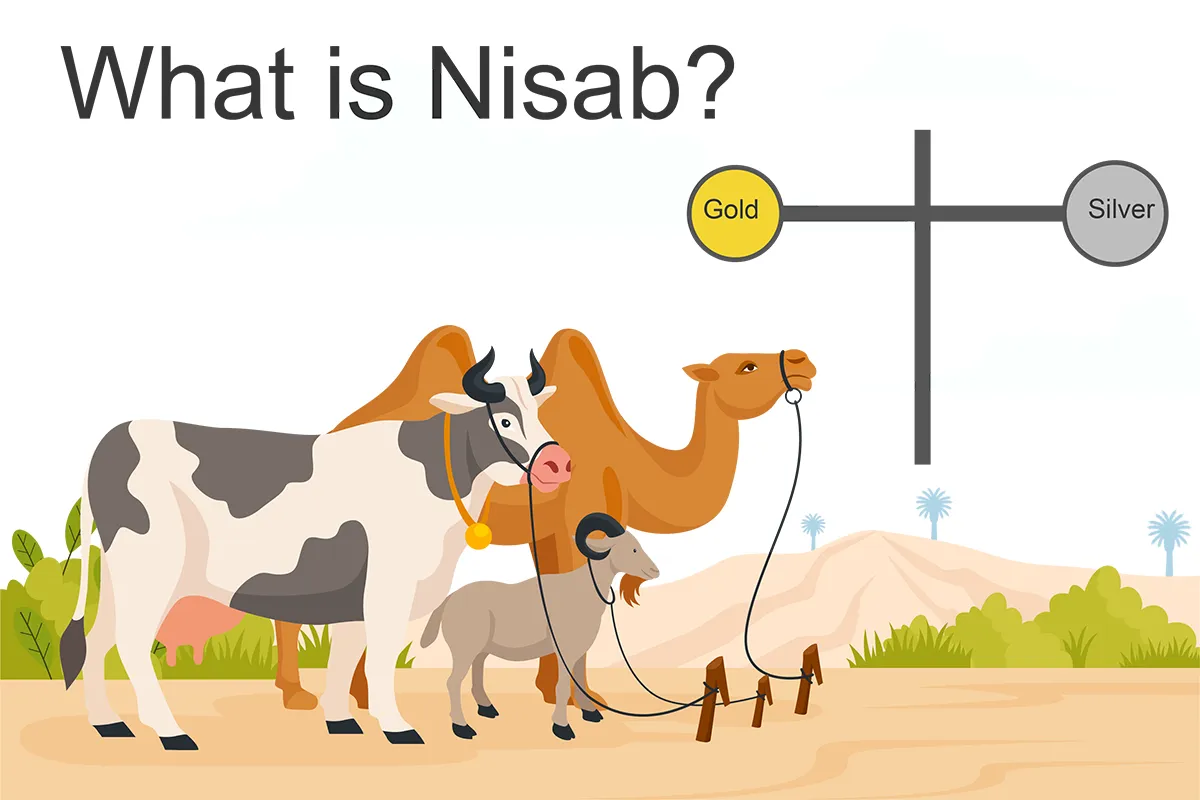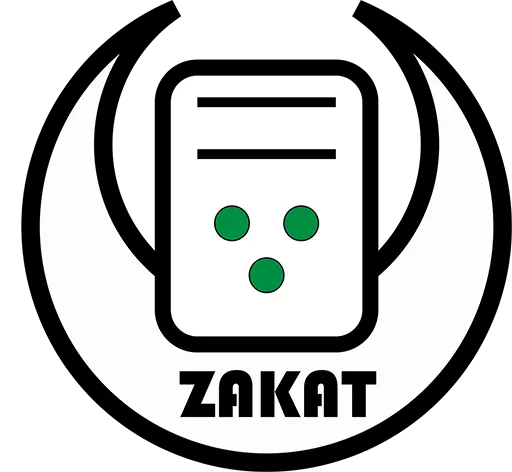
When it comes to Zakat, one of the most important terms you will listen is Nisab. But what exactly is Nisab? 🤔 Let’s break it down.
Nisab is the minimum amount of wealth a Muslim must have before they are required to pay Zakat. It ensures that only those who can afford it are obligated to give. The concept of Nisab promotes fairness and ensures that Zakat benefits those in need while not overburdening the giver. 🌍
Why Was Nisab Fixed?
You might wonder, Why was Nisab fixed in the first place? The Prophet Muhammad (peace be upon him) established Nisab to set a clear threshold for Zakat obligations. This standard ensures that Zakat is paid by those who have surplus wealth. The fixed criteria eliminate confusion and create a universal guideline for all Muslims. ✨
In the early days of Islam, the concept of Nisab was revolutionary. It created a balanced economic system that reduced inequality and provided a safety net for the poor. Today, it’s just as relevant in achieving social justice.
Types of Nisab
There are different types of Nisab based on wealth and livestock. Each category has specific thresholds. Understanding these will help you determine whether Zakat is obligatory for you.
Nisab on Gold
Gold plays a significant role in calculating Nisab. The threshold for Nisab on gold is 20 mithqals, which is approximately 85 grams of gold. If you own gold above this limit for a lunar year, you are obligated to pay Zakat at 2.5% of its value.
Here’s an example:
- If you own 100 grams of gold and the market rate is $60 per gram, your total gold value is $6,000. Subtract the Nisab threshold value (85 grams). You are required to pay Zakat on the remaining 15 grams, which equals $900. 🪙
For more details on calculating Zakat on gold, check out this comprehensive guide.
Nisab on Silver
Silver, just like gold, is also used to determine Nisab. The threshold for Nisab on silver is 200 dirhams or about 595 grams of silver.
Why is silver still relevant today?
Silver is often used to calculate Nisab for those who might not have gold but possess wealth in other forms. 💎
Pro Tip: Always check the current market rates for silver before calculating your Zakat. Use this helpful calculator to ensure accuracy.
Nisab on Livestock
Islamic law also considers livestock when calculating Zakat. Let’s explore the Nisab for camels, cows, and goats.
Nisab on Camels
If you own camels, you will be happy to know the Nisab on camels is simple. You need to own at least 5 camels for Zakat to be obligatory. Here’s how it works:
- For 5-9 camels, the Zakat is 1 goat or sheep.
- As the number increases, so does the Zakat amount.
Learn more about the guidelines here.
Nisab on Cows
The Nisab on cows is a minimum of 30 cows. Once you reach this threshold, you are required to give 1 calf as Zakat.
Key point: The age and condition of the cow matter when determining the Zakat amount. 🐄
Discover detailed rules for cows in this guide.
Nisab on Goats
For Nisab on goats, the minimum number is 40 goats. If you own 40 to 120 goats, you must give 1 goat as Zakat. Beyond this range, the Zakat obligation scales.
Check out the complete rules for goats.
Benefits of Nisab
The concept of Nisab brings multiple benefits to society and individuals. Here’s why it’s such a critical aspect of Islamic finance:
- Fair Distribution of Wealth: Ensures the rich contribute to the welfare of the poor.
- Economic Growth: By redistributing wealth, Zakat stimulates economic activity.
- Spiritual Benefits: Paying Zakat purifies your wealth and strengthens your connection with Allah. 🕊️
- Social Welfare: The implementation of Nisab ensures the underprivileged get the support they need. By collecting and distributing Zakat based on Nisab, communities can provide essential resources like food, shelter, and education to those in need.
- Economic Stability: The wealth redistribution facilitated by Nisab reduces economic disparities. This helps stabilize economies by boosting consumer spending and reducing poverty.
- Personal Growth: For the individual, calculating and paying Zakat based on Nisab nurtures discipline and accountability. It instills a habit of mindful spending and saving, creating a balanced financial approach.
- Global Impact: On a larger scale, Nisab creates a framework that can be applied universally, fostering a sense of unity among Muslims worldwide. This shared financial responsibility reinforces the bonds of brotherhood.
- Encouraging Generosity: By setting a clear threshold, Nisab motivates individuals to be generous, knowing their contributions are impactful and meaningful.
The beauty of Nisab lies in its ability to intertwine personal responsibility with societal benefit. For more insights, explore this detailed article on the advantages of Nisab.
How to Calculate Your Nisab
Calculating Nisab might seem daunting, but it’s simpler than you think. Follow this step-by-step guide:
- Determine Your Assets: List all your savings, investments, gold, silver, and other assets.
- Subtract Liabilities: Deduct debts and necessary expenses.
- Check Current Nisab Values: Use up-to-date gold and silver rates.
- Compare Your Net Worth: Ensure it exceeds the Nisab threshold.
💡 Want to simplify this process? Calculate your zakat today with accurate manner.
Examples for Better Understanding
Let’s break this down further with examples to make it crystal clear. 📝
Example 1: Calculating Zakat on Gold
Imagine you own 150 grams of gold. If the current price of gold is $60 per gram, your total wealth in gold is 150 × $60 = $9,000. The Nisab on gold is 85 grams. Subtract the Nisab value (85 × $60 = $5,100). The remaining $3,900 is Zakatable. Calculate 2.5% of $3,900, which equals $97.50.
Zakat Due: $97.50
Example 2: Calculating Zakat on Savings and Debts
You have $5,000 in your savings account and owe $1,000 in debt. Subtract the debt from your savings ($5,000 – $1,000 = $4,000). Check if $4,000 exceeds the Nisab on silver value (595 grams of silver × current rate). If it does, calculate Zakat at 2.5% of $4,000 = $100.
Zakat Due: $100
Example 3: Calculating Zakat on Combined Wealth
You have $3,000 in savings, 50 grams of gold (50 × $60 = $3,000), and 300 grams of silver (300 × $1 = $300). Combine your wealth: $3,000 (savings) + $3,000 (gold) + $300 (silver) = $6,300. Subtract liabilities and check against the Nisab threshold. If it exceeds the threshold, calculate 2.5% of $6,300 = $157.50.
Zakat Due: $157.50
These examples simplify the process, ensuring you’re confident in fulfilling your Zakat obligation.
Info Box: Quick Nisab Reference
| Wealth Type | Nisab Threshold |
| Gold | 85 grams |
| Silver | 595 grams |
| Camels | 5 camels |
| Cows | 30 cows |
| Goats | 40 goats |
The Spiritual Significance of Nisab
Did you know? Beyond its financial aspects, Nisab holds deep spiritual significance. By adhering to its guidelines, you fulfill an essential pillar of Islam and contribute to a better society. 🌟
Strengthening Faith: The concept of Nisab reminds Muslims of their accountability to Allah. Paying Zakat from wealth above the Nisab threshold cultivates humility and trust in Allah’s provisions. It’s a direct way to express gratitude for the blessings received.
Cleansing Wealth: Zakat is not merely a financial obligation; it purifies your wealth. By giving a portion to the needy, your remaining wealth is blessed and safeguarded from harm. This aligns with the Quranic promise that charity never decreases wealth.
Community Impact: The spiritual value of Nisab extends beyond individuals. It creates a society where wealth is not hoarded but shared. This fosters unity, empathy, and mutual support within the Muslim community. 💞
Personal Reflection: Every time a Muslim calculates their Nisab, it’s an opportunity to reflect on life’s blessings. This self-assessment nurtures a sense of purpose and contentment.
By embracing the spiritual essence of Nisab, you’re not just fulfilling a duty but embarking on a journey of self-purification and social betterment. For more insights, explore this link.
Conclusion
Understanding Nisab is essential for every Muslim aiming to fulfill their Zakat obligations. It’s not just a financial duty but a spiritual act that uplifts the soul and benefits society. By calculating your wealth and ensuring it meets the Nisab threshold, you play a vital role in creating a just and equitable world. 🌏
If you’re unsure about your Zakat calculations, don’t hesitate to use reliable resources and tools to ensure accuracy. Giving Zakat with a sincere heart brings immense blessings and peace. 💖
FAQs
Nisab is the minimum amount of wealth a Muslim must have before Zakat becomes obligatory. It ensures that Zakat is only paid by those who can afford it.
The Nisab on gold is 85 grams. If you own more than this amount for a lunar year, you’re obligated to pay Zakat.
For silver, the threshold is 595 grams. Check the current market rate to calculate its value accurately.
Islamic guidelines specify different thresholds for camels, cows, and goats to account for their varying economic values and utility.
If your wealth is below the Nisab threshold, you are not required to pay Zakat. However, voluntary charity is always encouraged. 🙏
While the concept of Nisab is universal, its value depends on the local market rates of gold and silver.
